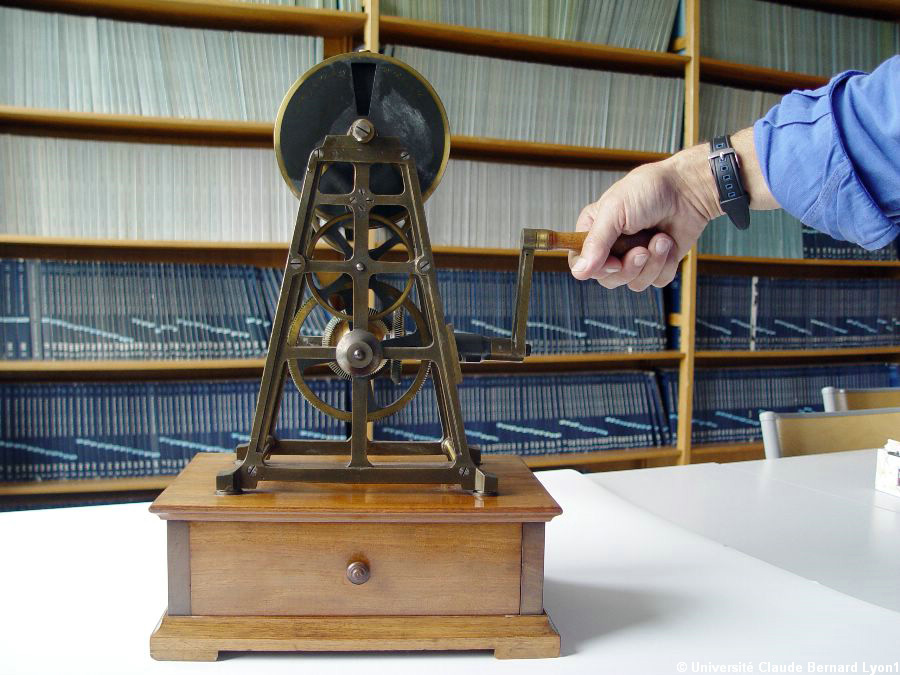Old physics and physiology equipment
Studying the nature of things, through experiment, whether the objects of the study be inanimate or animate, is a passion that physicists and physiologists share. The special characteristics of the functioning of human being incite biologists to turn into physicists if necessary. In return, physicists have provided physiologists with equipment such as the spectroscope, which enables the various states of haemoglobin to be studied, an experiment carried out by Claude Bernard during his famous Lessons.
The collection of old instruments includes physics and physiology equipment dating back to the 19th century. Most of the pieces of equipment invented by Etienne-Jules Marey and Paul Bert are described there. The collection includes recording cylinders, myographs, spirographs and cardiographs. The collection also features electrophysiology instruments, new at that time, from the large induction coil invented by Dubois-Reymond to the galvanometer by Kelvin-William Thomson, via non-polarisable electrodes by Arsène d'Arsonval and the cam cylinder by Henry Cardot (1886-1942).Almost 200 old pieces of equipment
Old physiology equipment is to be found at Doua because a chair of general physiology of the science faculty was created in Lyon in 1883. The position was given in 1887 to Rapha?l Dubois (1848-1929), former student of Claude Bernard and Paul Bert, known for his discovery of the mechanism by which living beings produce light. Dubois obtained a very comprehensive range of equipment for his laboratory. As former deputy-director of the physiological optics laboratory, he invented an ophthalmometer, which can be found in the collection. In 1900 he published his Experimental physiology lessons and worked on the Treatise on biological physics by Arsène d'Arsonval, works which were used widely for several decades. Some of the colleagues of Rapha?l Dubois specialised in metabolic research, hence the presence of old manometers by Warburg, used to measure cellular respiration. His successor, Daniel Cordier (1900-1960), acquired the first spectrophotometers, electrophoresis and chromatograph devices, which given a representative panorama of the tools used for research on the metabolism between 1950 and 1970. Donations have also been added to the collection: a prototype of the electrophotometer invented in 1936 by Paul Meunier (1908-1954), who was the biochemistry professor at the faculty of science of Lyon. Other devices document electrophysiological research from the same period and others (microscopes, balances, centrifuges and calculators) are those that biologists usually used.
Manager : Gérard Panczer
Category : Scientific instruments



 en
en fr
fr
 es
es

